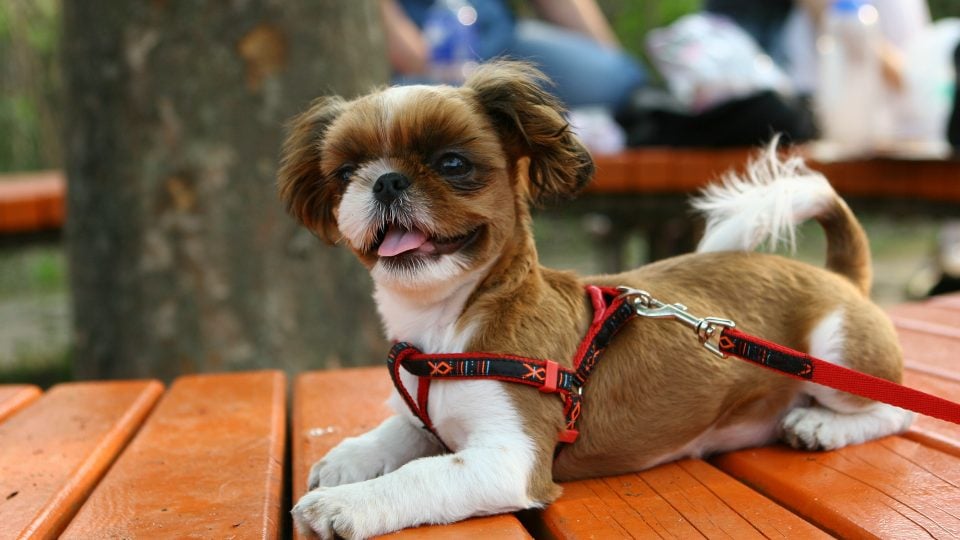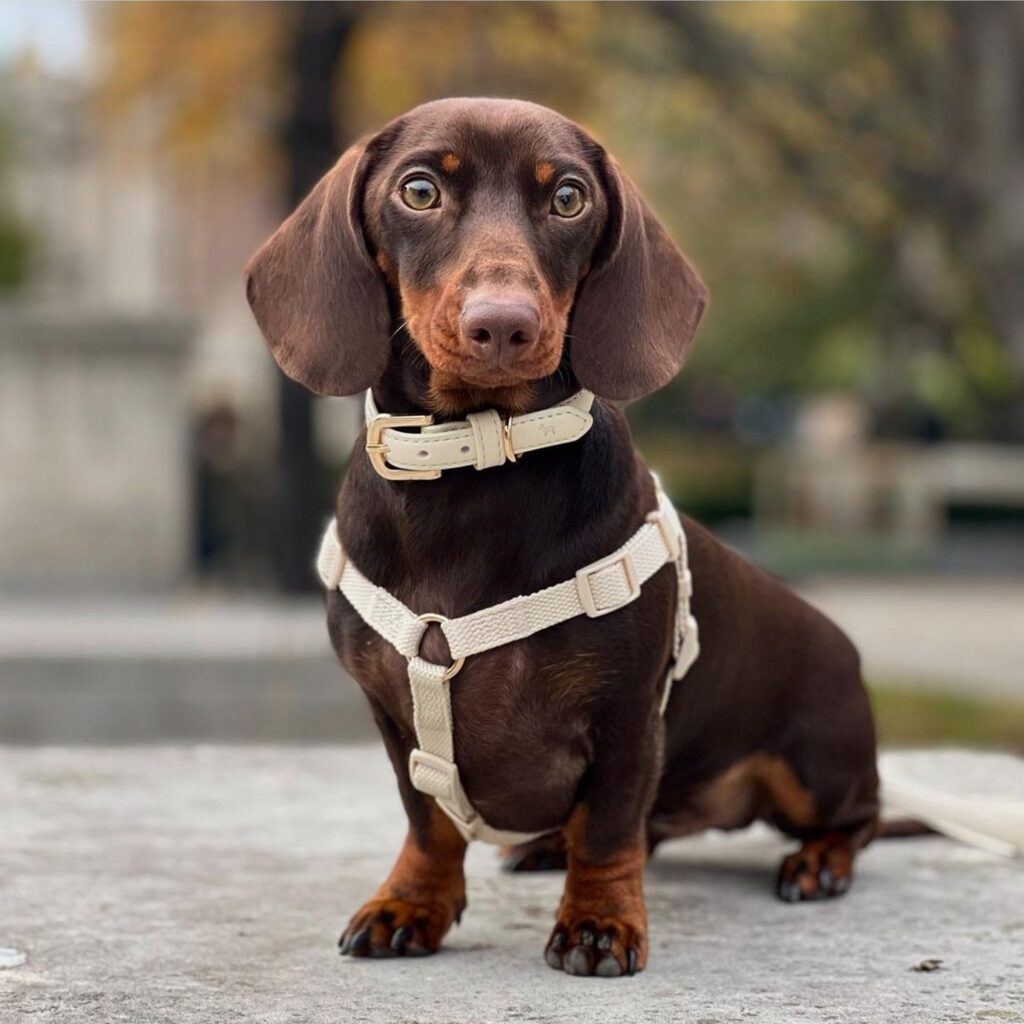To choose the right dog harness for walking, consider your dog’s size, activity level, and walking habits. It’s important to ensure a proper fit to prevent discomfort or chafing.
The right harness can make walks more enjoyable for both you and your dog. When it comes to choosing a dog harness for walking, the right fit is crucial. A well-fitted harness can provide security and control, while minimizing strain on your dog’s neck.
It’s essential to consider the type of activity, whether it’s casual walks, hiking, or running. Factors such as material, padding, and adjustability also play a significant role. With various options available, considering your dog’s individual needs and preferences will help you select the most suitable harness. By choosing the right harness, you can ensure a safe, comfortable, and enjoyable walking experience for both you and your furry friend.

Credit: www.amazon.com
1. Importance Of Using A Dog Harness For Walking
Choosing the right dog harness for walking is essential for the comfort and safety of your furry friend. A dog harness provides better control and reduces the risk of injuries when compared to using a collar. Let’s delve deeper into the importance of using a dog harness for walking.
1.1 Prevents Neck Injuries
A dog harness is designed to distribute the force of a dog’s movements across their chest and shoulders, preventing strain on the neck. This is especially crucial for smaller breeds or dogs with delicate throats.
1.2 Better Control And Management
Using a harness allows pet owners to have better control over their dog’s movements, making it easier to manage excitable or larger dogs. It also discourages pulling, making walks more enjoyable for both the dog and the owner.
1.3 Reduces Pulling And Lunging
A harness discourages pulling and lunging, making walks more pleasant for both you and your dog. It promotes better leash manners and prevents your dog from endangering itself or others by reducing its ability to pull forcefully.
2. Different Types Of Dog Harnesses
When it comes to choosing the right dog harness for walking, it’s essential to understand the different types available. Each type of harness serves a specific purpose, catering to different dog breeds and walking habits. Understanding the various options will help you make an informed decision based on your dog’s temperament, size, and behavior.
2.1 Back-clip Harness
The back-clip harness is designed to attach the leash to a ring located on the dog’s back. This type of harness is best suited for well-behaved dogs with a calm walking demeanor. It offers a comfortable walking experience and prevents pulling, making it ideal for smaller breeds or dogs with respiratory issues.
2.2 Front-clip Harness
The front-clip harness features a leash attachment on the dog’s chest, redirecting their attention towards the handler when they pull. This type of harness is beneficial for dogs that tend to pull during walks, providing better control and minimizing their ability to lunge forward. It’s particularly effective for larger, more energetic breeds.
2.3 Dual-clip Harness
The dual-clip harness combines both back and front leash attachment points, offering versatility in walking styles. This harness is suitable for dogs that require varying levels of control during different walking environments. Owners can choose to use either attachment point based on their dog’s behavior, making it a versatile option for active walking routines.
2.4 Head Halter Harness
The head halter harness is designed to loop around the dog’s head, similar to a horse’s halter, providing control at the point of the dog’s head rather than their body. This type of harness is effective for dogs with a strong pulling habit, as it redirects their attention and minimizes their ability to pull forcefully. It’s a great option for larger, strong-willed breeds.
3. Factors To Consider When Choosing A Dog Harness
Factors to consider when choosing a dog harness for walking include the size and breed of your dog, the comfort and fit of the harness, and the durability and materials used. Properly selecting a harness can ensure a safe and enjoyable walking experience for both you and your furry friend.
When it comes to choosing the right dog harness for walking, there are several important factors to consider. A well-fitting and comfortable harness can make a huge difference in your dog’s walking experience, ensuring their safety and comfort. Here are the key factors to keep in mind when selecting a dog harness:
3.1 Size And Fit
Size and fit are crucial when it comes to choosing a dog harness. An ill-fitting harness can cause discomfort, chafing, or restricted movement for your furry friend. To ensure the right size, measure your dog’s chest circumference and refer to the manufacturer’s size chart. It’s important to find a harness that can be adjusted to fit snugly, but not too tight, around your dog’s chest and neck. A properly fitting harness will allow your dog to move freely while providing maximum comfort and support during walks.
3.2 Material And Durability
The material and durability of the harness play a significant role in its longevity and effectiveness. Look for a harness that is made from high-quality, durable materials such as nylon or polyester. These materials are not only strong and long-lasting but also easy to clean. Opt for a harness with reinforced stitching and sturdy hardware, like metal D-rings, that can withstand the pull and strain of daily walks. Investing in a durable harness ensures that it will last through many adventures with your canine companion.
3.3 Ease Of Putting On And Taking Off
Putting on and taking off the dog harness should be hassle-free for both you and your four-legged friend. Choose a harness that is easy to put on and take off, preferably with adjustable straps and buckles. A step-in harness or an over-the-head design with quick-release buckles can be convenient options. The process should be quick and simple, avoiding any unnecessary struggles or discomfort for your dog. This way, you can spend more time enjoying your walks together.
3.4 Handling Modifications
The harness you choose should provide optimal control and handling modifications. Look for features like a front attachment point, such as a chest leash clip, which helps discourage pulling and redirects your dog’s attention towards you. The ability to attach the leash on the back of the harness is also essential, especially if your dog is already well-behaved on walks. Having multiple attachment points gives you flexibility and control based on your dog’s behavior and training needs.
3.5 Reflective And Visibility Features
Enhancing your dog’s visibility and safety during walks is crucial, especially in low-light conditions or when walking near roads. Look for a harness that includes reflective strips or stitching to increase visibility when illuminated by car headlights or other light sources. These reflective features can significantly reduce the risk of accidents and make your dog more visible to drivers and pedestrians alike. Prioritizing safety by choosing a harness with visibility features is a wise decision.

Credit: www.rover.com
4. Step-by-step Guide On How To Measure Your Dog For A Harness
Discover the step-by-step process for measuring your dog for the perfect harness. Ensure a comfortable fit and enjoyable walks with your furry friend by following this comprehensive guide. From the chest to the neck, learn how to get the right measurements for a safe and secure harness.
Choosing the right dog harness for walking is essential to ensure the comfort and safety of your furry friend. One crucial step in this process is measuring your dog for a harness. By following these step-by-step instructions, you’ll be able to determine the proper measurements for your dog’s neck, chest, and girth, ensuring a perfect fit for their harness.
4.1 Determining The Proper Measurements
Before diving into the specific measurements, it’s important to understand the significance of determining the proper measurements for your dog’s harness. A well-fitting harness will provide maximum comfort, preventing any discomfort or chafing during walks. It will also ensure that the harness doesn’t slip off or become too tight, keeping your dog secure and safe.
4.2 Measuring The Neck
To measure your dog’s neck, place a soft measuring tape or string around the base of their neck where the collar usually sits. Make sure to leave enough space for your finger to fit comfortably between the tape and their neck. Note down the measurement in inches or centimeters, ensuring accuracy for a snug yet comfortable fit.
4.3 Measuring The Chest
The chest measurement is crucial to determine the right size harness for your dog’s body. Take the measuring tape and wrap it around the widest part of your dog’s chest, typically just behind their front legs. Again, ensure that there’s enough room for your finger to fit between the tape and their body. Write down the measurement, making sure it’s neither too loose nor too tight.
4.4 Measuring The Girth
Measuring the girth is the final step in determining the correct size harness for your dog. This measurement considers the chest and body length combined. Start by placing the measuring tape at the base of your dog’s neck, then bring it around their body and back to the starting point. Be sure to keep the tape parallel to the ground for accuracy. Write down the girth measurement, and remember that this should be a snug, yet comfortable fit. By following this step-by-step guide, you’ll be able to measure your dog accurately, ensuring a perfect fit when choosing a harness. Remember, a well-fitting harness is essential for your dog’s comfort and safety during walks, enabling you to enjoy quality time outdoors together.
5. Tips For Introducing And Training A Dog To Wear A Harness
Introducing your dog to wearing a harness can be a gradual process that requires patience and positive reinforcement. By following these tips, you can help your dog adjust to their new harness comfortably. Remember, each dog is unique, so be sure to adapt these methods to suit your pet’s individual needs.
When introducing and training your dog to wear a harness, it is crucial to use positive reinforcement and take things slowly. Start by placing the harness near your dog’s bed or in their favorite spot, allowing them to become familiar with its presence. Over time, gradually introduce the harness by letting your dog sniff and examine it. Reward their curiosity and calm behavior with praise or a small treat.
Rather than overwhelming your dog with long training sessions, aim for short and frequent sessions to keep them engaged and prevent frustration. Begin by gently slipping the harness over your dog’s head and rewarding them for their cooperation. Gradually increase the duration your dog wears the harness, adding a few minutes each day. This gradual approach will help them associate the harness with positive experiences.
One effective way to train your dog to wear a harness is through reward-based training. Use treats or their favorite toy as an incentive to encourage them to voluntarily put their head through the harness. Reward them immediately with praise and a treat, reinforcing the positive behavior. This positive association will make the harness a desirable and enjoyable part of their routine.
Make wearing the harness an enjoyable experience for your dog by associating it with fun activities. Before heading out for a walk, play a short game or engage in interactive play while they are wearing the harness. This way, your dog will begin to associate the harness with excitement, making the process of putting it on more enjoyable for both of you.

Credit: www.linkedin.com
Frequently Asked Questions On Choosing The Right Dog Harness For Walking
What Is The Best Harness To Teach A Dog To Walk?
The best harness for teaching a dog to walk is one that fits comfortably and allows for proper control. Look for a harness with front attachment points to discourage pulling. It’s important to introduce the harness gradually and use positive reinforcement during training sessions.
Is A Front-clip Or Back-clip Harness Better?
A front-clip harness is generally considered better as it discourages pulling and provides more control over a dog’s movements. It redirects their attention towards the handler, making training easier. A back-clip harness may be more comfortable for some dogs but doesn’t offer the same level of control.
Why Are Y Shaped Harnesses Better?
Y-shaped harnesses are better because they distribute the force of pulling evenly across the chest, reducing strain on the neck and throat. This design also provides better control, reducing the risk of escape and injury. Additionally, Y-shaped harnesses are comfortable and adjustable, ensuring a secure and snug fit for your dog.
What To Look For When Buying A Dog Harness?
When buying a dog harness, consider the size and fit, material quality, ease of use, safety features, and your dog’s specific needs. Ensure proper sizing, durable materials, adjustable straps, reflective elements, and a comfortable design for your furry friend.
Conclusion
To ensure a comfortable and safe walking experience for both you and your furry friend, choosing the right dog harness is crucial. Consider your dog’s size, breed, and specific needs to determine the best fit. Whether it’s a step-in, back clip, or front clip harness, prioritize features like durability, adjustability, and padding.
By selecting the right harness, you’re providing optimal support and control during walks, enhancing the bond between you and your dog. Happy walking!

